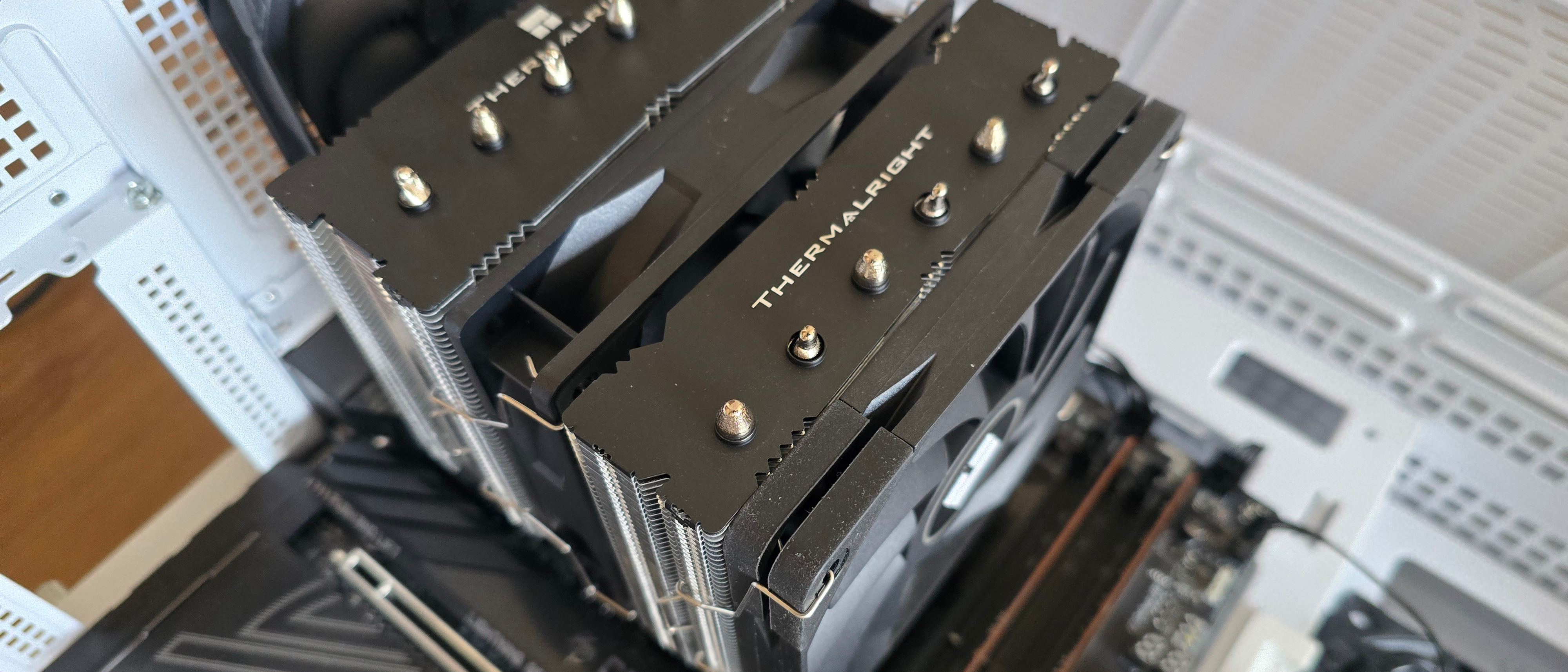Why you can trust Tom's Hardware
CPU-only thermal results with PBO enabled: AMD Ryzen 9 9950X3D
Without power limits enforced, the most thermally demanding CPUs will hit their peak temperature (TJ Max) and thermally throttle with even the strongest of air coolers and even most liquid coolers in intensive stress testing. For the best liquid coolers I’ve tested, the results of this test will be shown using the CPU’s temperature. However, when the CPU reaches its peak temperature, I’ve measured the CPU package power to determine the maximum wattage cooled to best compare their performance. It’s important to note that thermal performance can scale differently depending on the CPU it’s being tested with.
We’ll start by looking at the performance of this cooler with AMD’s Ryzen 9 9950X3D CPU, with the disclaimer that I’ve only had a limited amount of time to test coolers with this system.
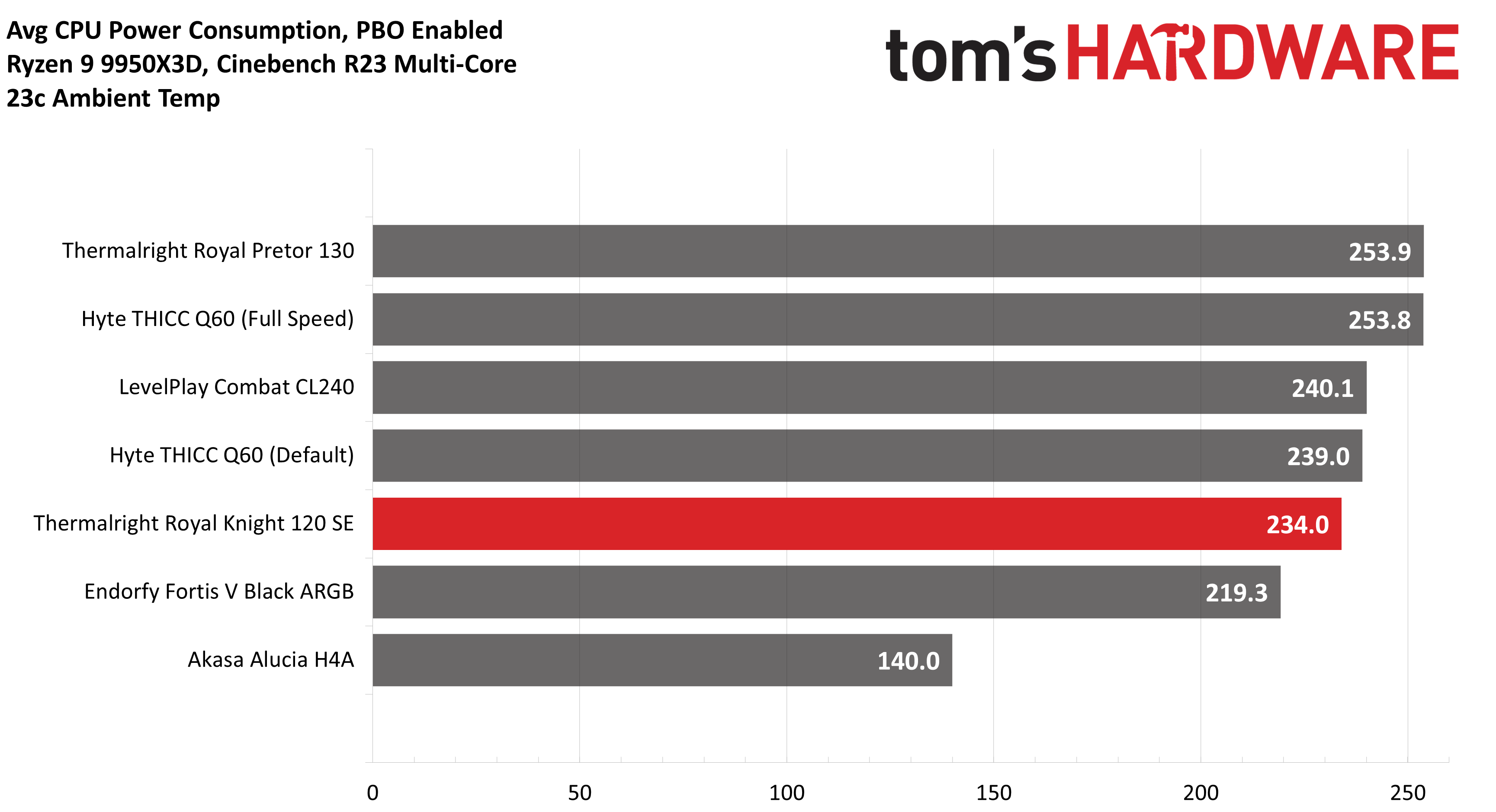
Thermalright’s results on AMD’s Ryzen 9950X3D were reasonably good, with the cooling 234W on average. I expect this level of performance from most dual-tower air coolers, but users wanting the very strongest performance will want to look at something like Thermalright’s Royal Pretor 130 instead.
CPU-only thermal results with power limits removed: Intel’s i7-14700K
Now let’s switch it up and take a look at how this cooler performs with Intel’s i7-14700K. The performance in comparison to other coolers is much better here, the second-best results I’ve seen from an air cooler thus far. That said, I haven’t yet tested the Royal Pretor 130 on this system yet – I expect extremely strong performance based on the performance seen above on AMD’s Ryzen 9950X3D.
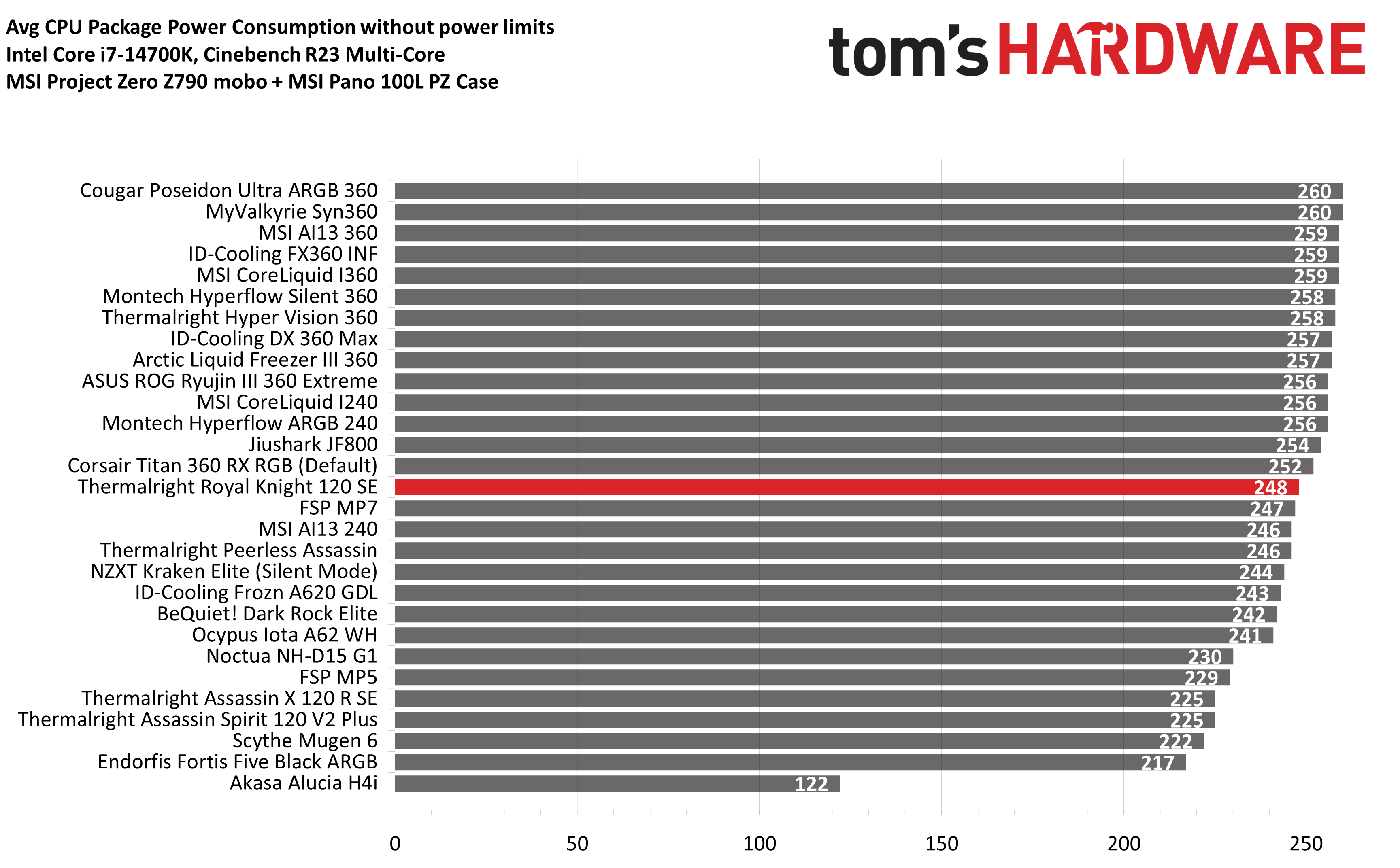
But of course, a cooler’s maximum performance can’t be considered in isolation. You should also consider the noise levels of a cooler. The loudest this cooler operates at is 43.4 dBA, a moderate level that most users should find acceptable.
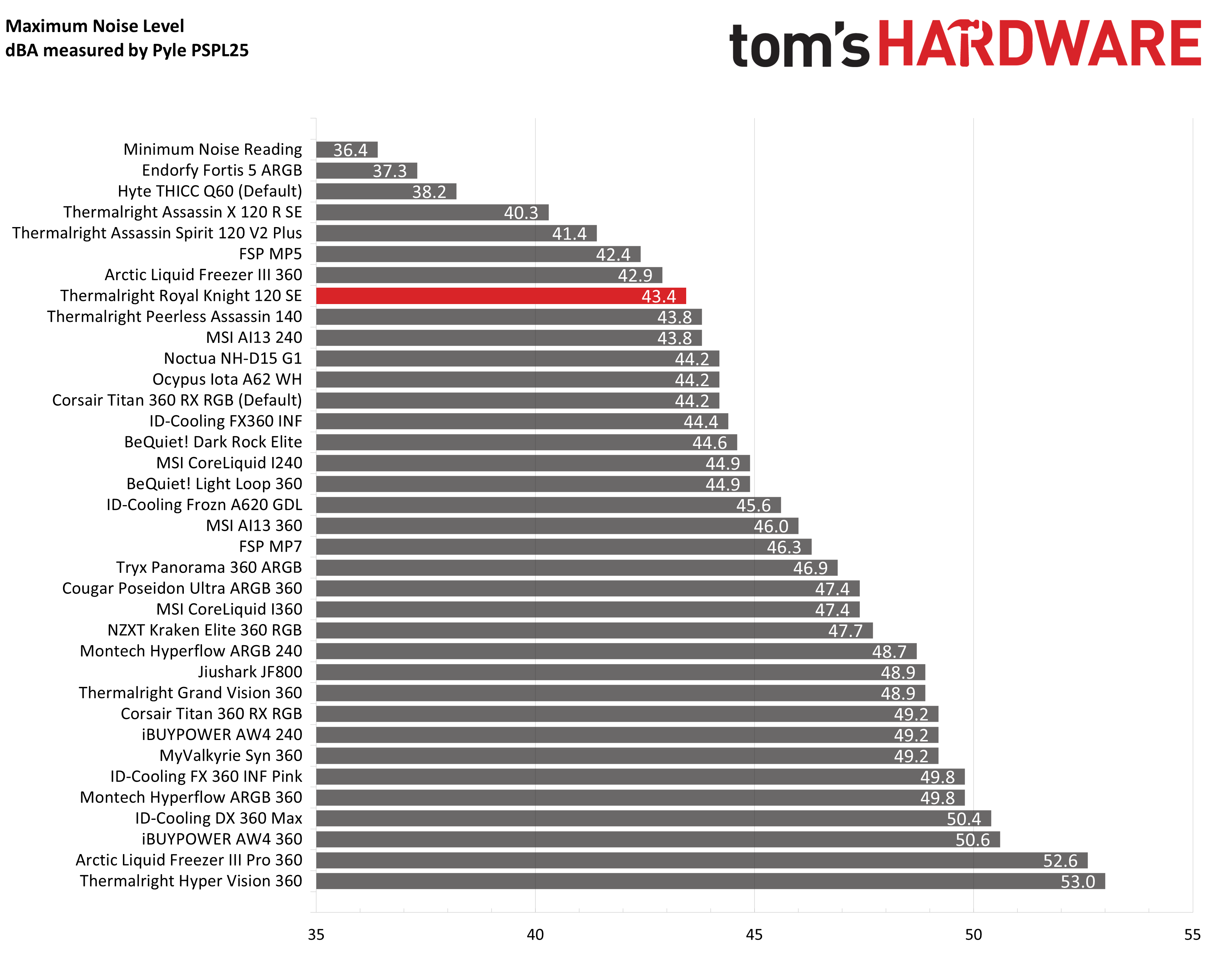
Noise Normalized CPU-only thermal results
Finding the right balance between fan noise levels and cooling performance is important. While running fans at full speed can improve cooling capacity to some extent, the benefits are limited, and many users prefer a quieter system.
We’ll be looking at noise-normalized testing in two different, distinct tests. We’ll first look at our traditional results with Intel’s i7-14700K, which places a full CPU load with the cooler’s noise levels set to 38.9 dBA.
Get Tom's Hardware's best news and in-depth reviews, straight to your inbox.
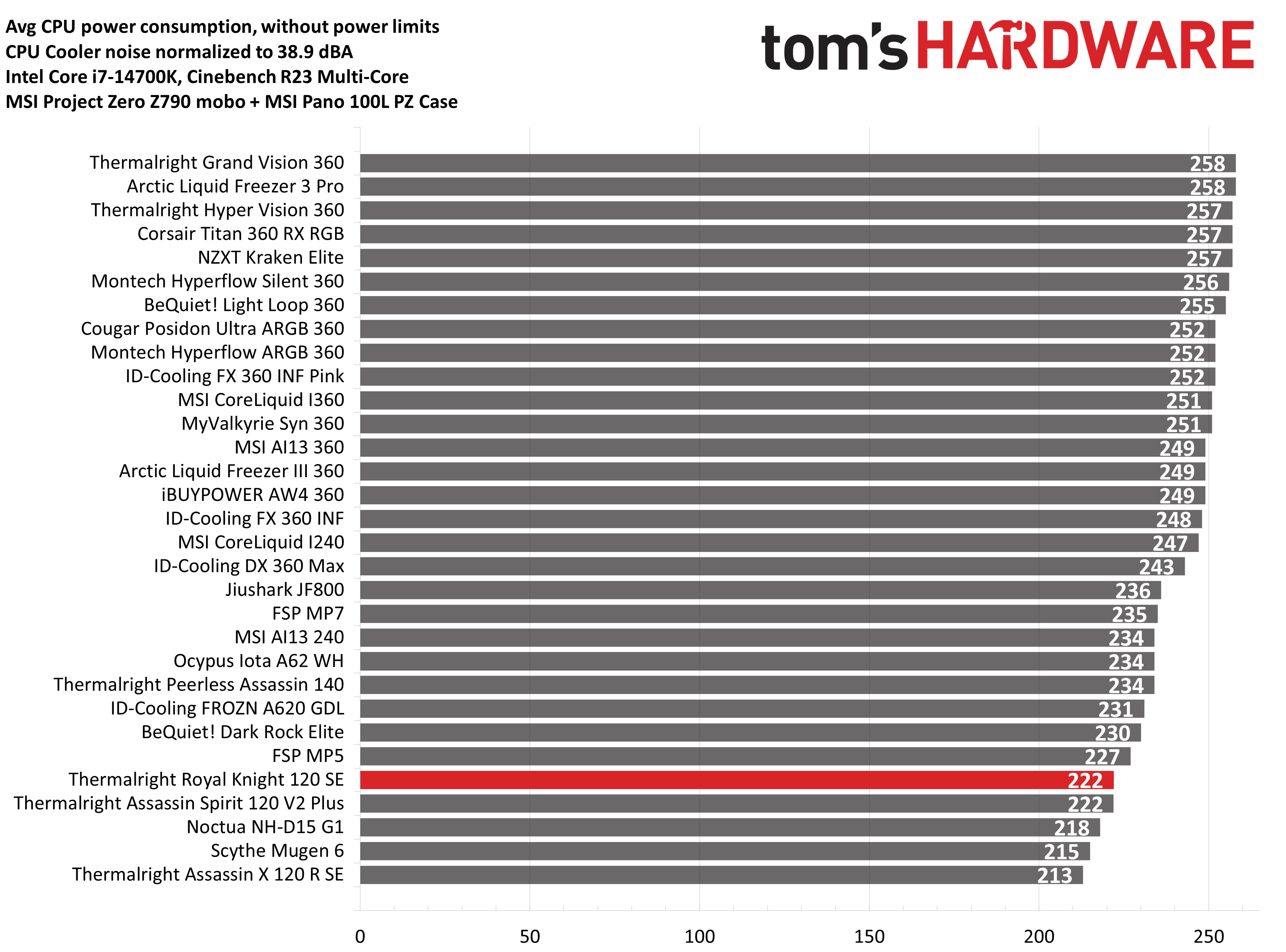
While the cooler performed well when its fans were allowed to run at full speeds, the noise-normalized performance here is underwhelming – cooling only 222W. That’s less than FSP’s NP5 single tower air cooler and equivalent to Thermalright’s own single tower air cooler.
I’ve recently started noise-normalized testing on AMD’s Ryzen 9 9950X3D. Two changes have been made to increase the difficulty of this test. The noise level of the CPU coolers has been reduced to 37.3 dBA, and I also run a full load on MSI’s RTX 4070 TI Super at the same time.
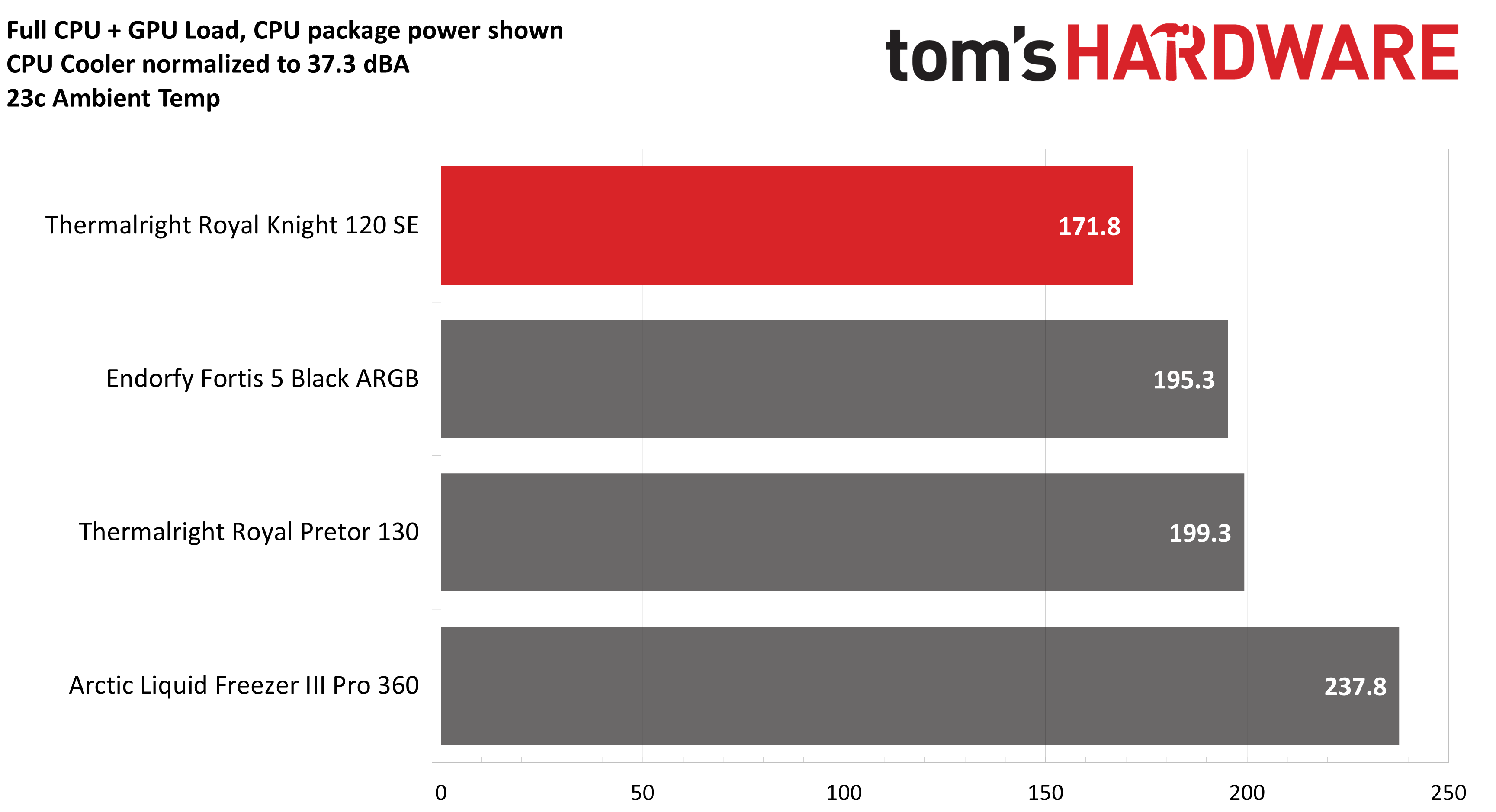
With the disclaimer that I’ve only had a limited amount of time to collect data for this test, Thermalright’s Royal Knight 120 SE did not perform well in this scenario, cooling roughly 23W less than Endorfy’s Fortis 5 Black. I suspect the poor performance with lower noise levels is related to the low static pressure of the fans included with this cooler.
200W Power Limit
My recent reviews have focused more on tests with both the CPU and GPU being stressed, but many readers have indicated they would like to see more CPU-only tests. So we’re going to look at thermal and noise performance for AMD’s Ryzen 9 9950X3D at stock CPU settings, which limits power consumption to 200W.
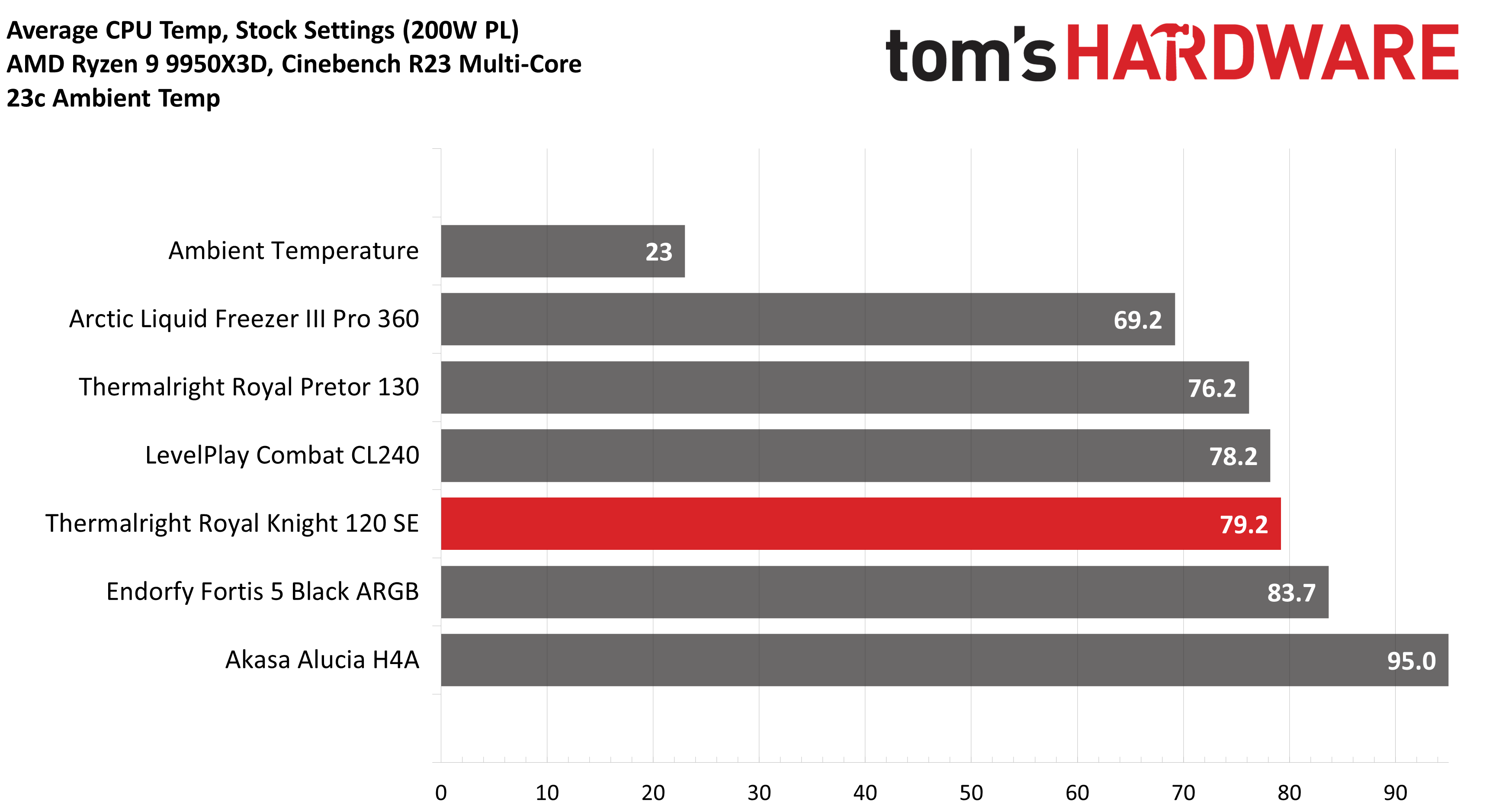
This test has more promising results for Thermalright’s cooler, keeping the CPU at 79.2 degrees C on average. That places it just behind LevelPlay’s 240mm AIO, and a few degrees ahead of Endorfy’s Fortis 5. Noise levels reach 42.9 dBA on average in this test.
150W CPU + 290W GPU results
Testing a CPU Cooler in isolation is great for synthetic benchmarks, but doesn’t tell the whole story of how it will perform. If your GPU is running a full load, that heat doesn’t just disappear – it makes it harder for your CPU cooler to do its job due to the increased heat within your computer case.
The CPU power limit of 150W was chosen based on the worst CPU power consumption I’ve seen reported in gaming amongst various outlets covering AMD’s Ryzen 9 9950X3D. My personal experience has shown most games to use much lower power, but this might be biased by the games I play.
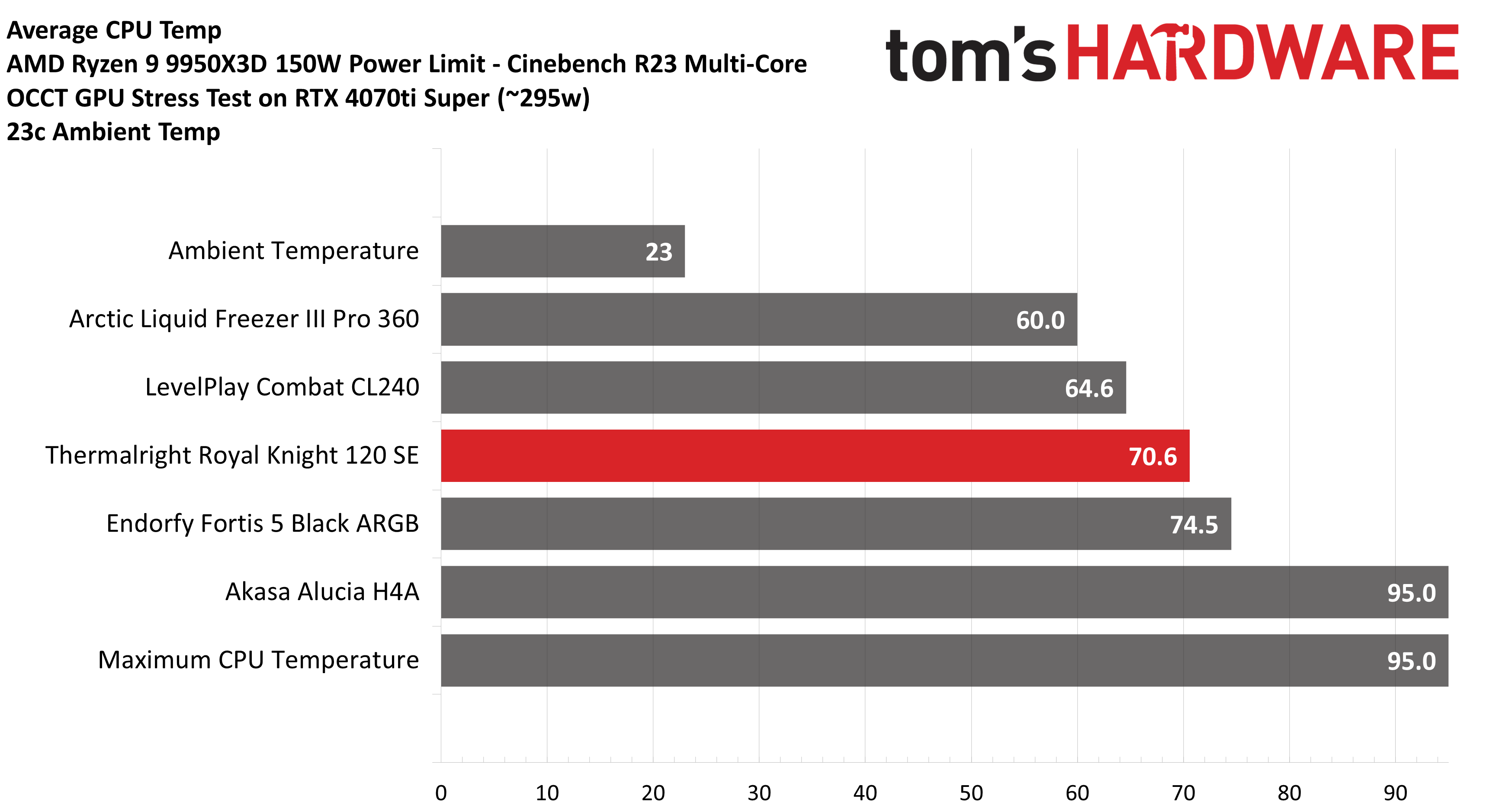
Keeping the CPU at 70.6 C in this test, we can see the Royal Knight 120 SE is plenty strong enough for even the most intensive gaming scenarios. The average noise level was 42.4 dBA, a moderate level that won’t bother most users.
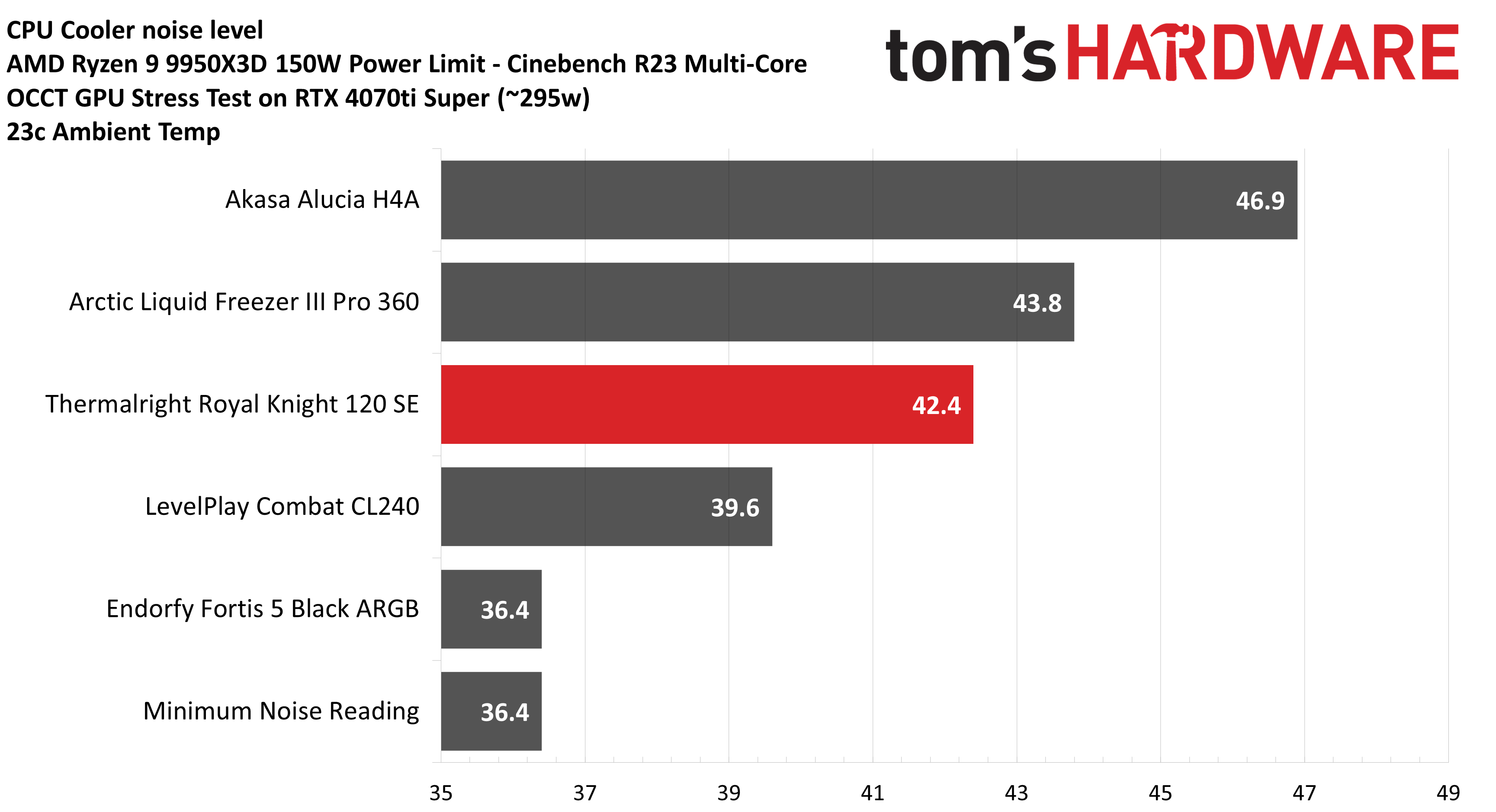
140W CPU results
The last round of test results we’ll look at is with a 140W power limit imposed. This level of power is much easier for most CPU coolers to handle. As a result, this is the easiest test we’ll run with AMD’s Ryzen 9 9950X3D CPU for most reviews, but I’ve recorded lower power results for comparisons with SFF and air coolers for future reviews.
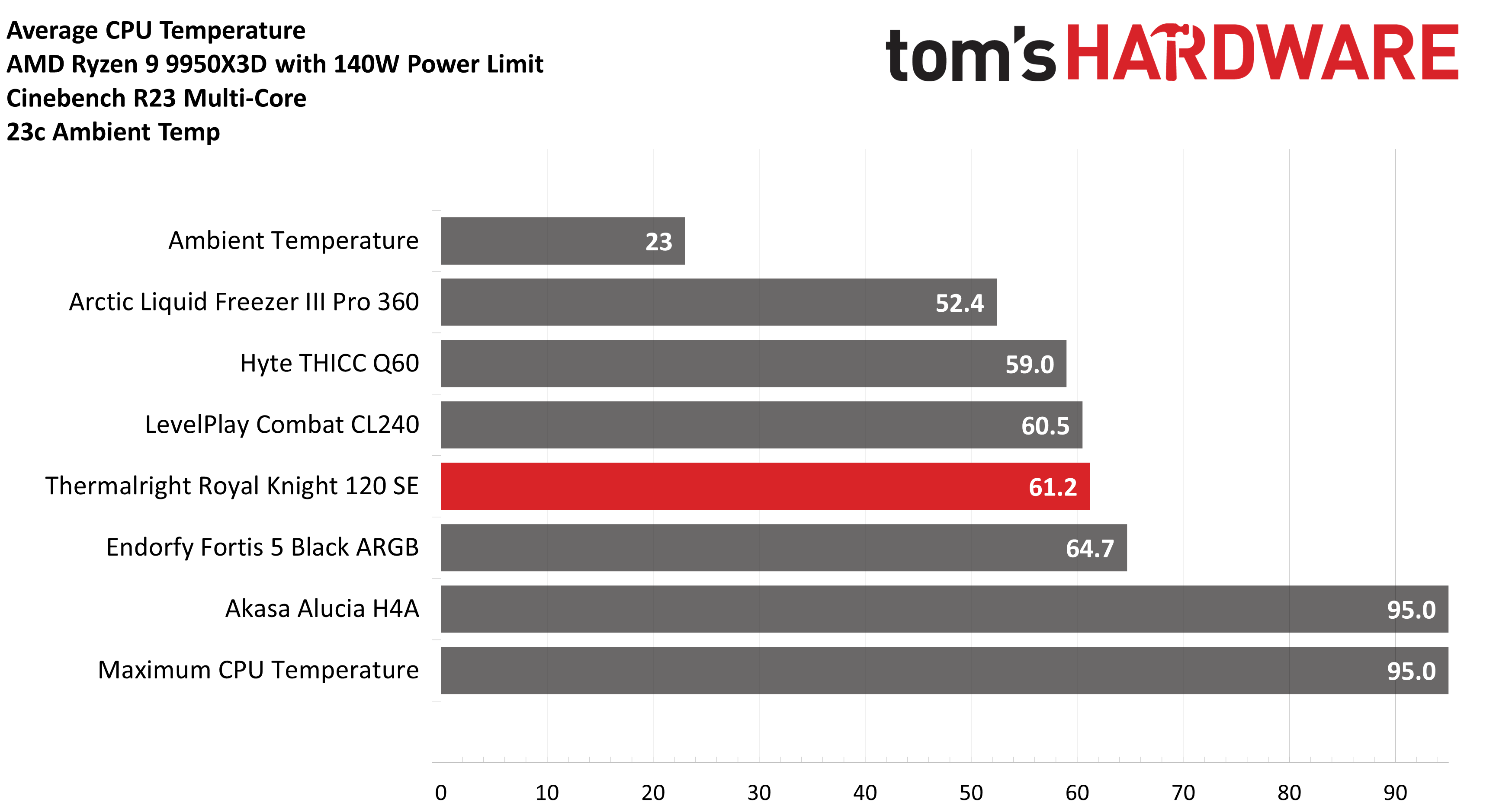
Thermalright’s Royal Knight 120 SE kept the CPU at an average of 61.2 degrees C in this scenario. I expect this result to be about average, but as you can see if you’re really picky above you can bring CPU temperatures closer to 52C with something like Arctic’s Liquid Freezer III Pro. Noise levels reached 40.9 dBA. While this isn’t loud per se, I feel like most coolers should run quieter on this low-intensity test.
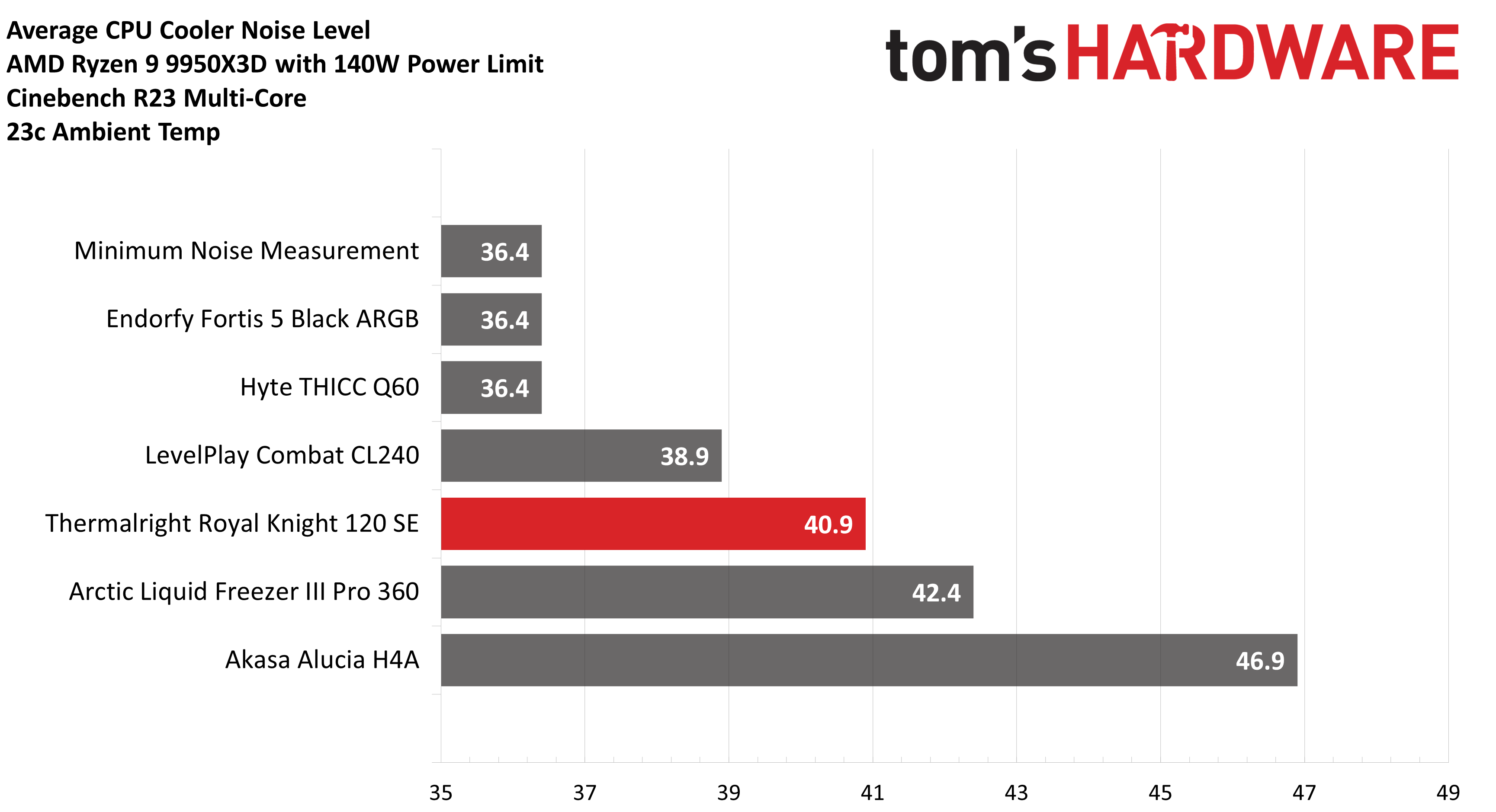
Conclusion
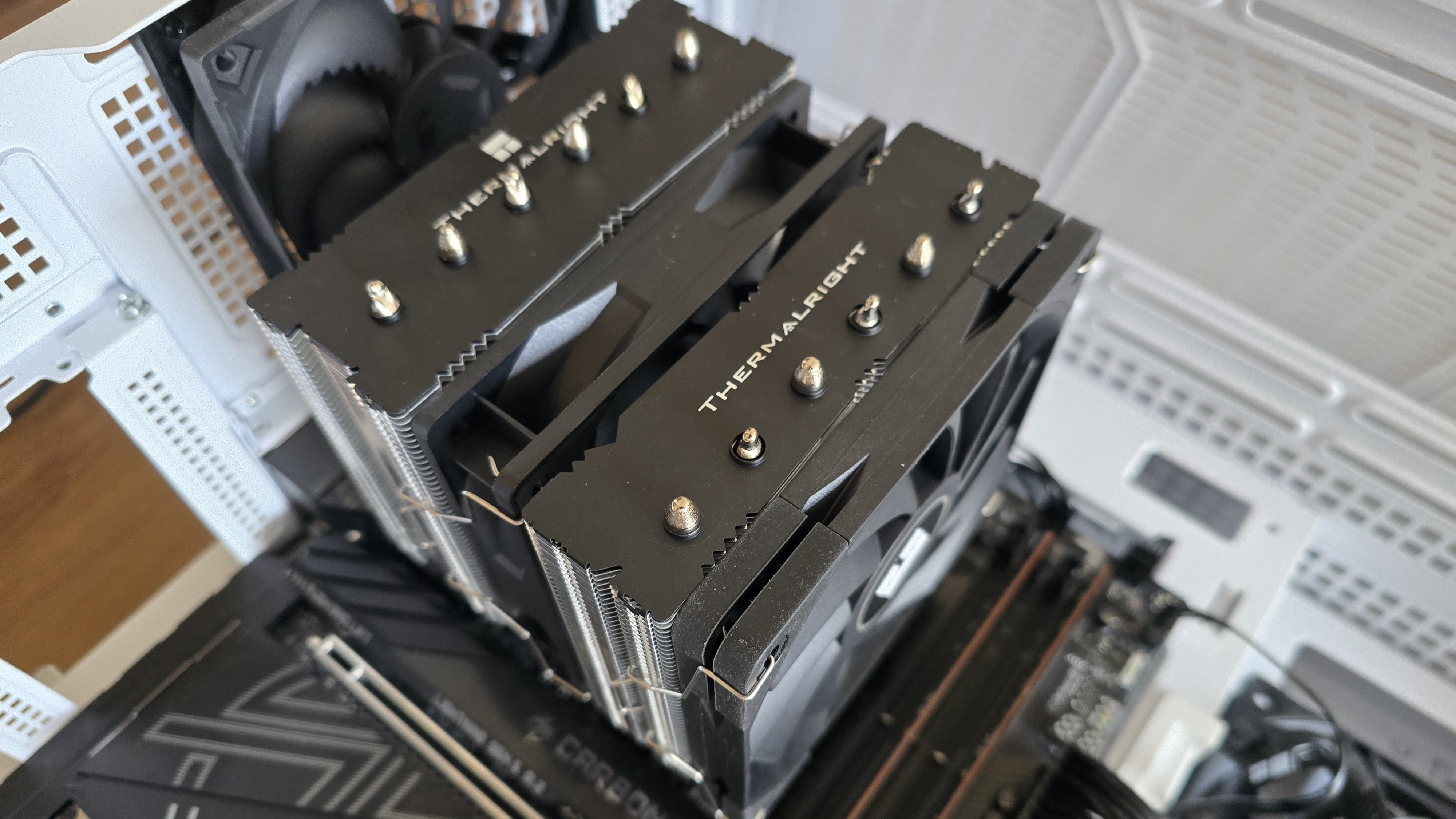
Thermalright’s Royal Knight 120 SE is a reasonable deal at only $32 USD, and provides good performance in general – especially on Intel systems. However, its noise-normalized performance is rather poor. Users who prioritize silent operation should consider an alternative cooler instead.

Albert Thomas is a contributor for Tom’s Hardware, primarily covering CPU cooling reviews.
-
thestryker I wonder if it's the slim fan losing airflow performance on the noise normalized causing the larger drop. Overall this still seems like a decent enough option given the price and DRAM clearance. I don't have particularly tall modules, but still had to move the fan on my PA140 a bit:Reply
https://i.imgur.com/fZA81e6.jpegThat might be something worth testing if a median DRAM height was easy enough to determine. -
Albert.Thomas Reply
Honestly, I think RAM compatibility issues are something users worry about pointlessly. There's very little if any performance lost by raising the fan up a few mm.thestryker said:I wonder if it's the slim fan losing airflow performance on the noise normalized causing the larger drop. Overall this still seems like a decent enough option given the price and DRAM clearance. I don't have particularly tall modules, but still had to move the fan on my PA140 a bit:
https://i.imgur.com/fZA81e6.jpegThat might be something worth testing if a median DRAM height was easy enough to determine. -
thestryker Reply
Ah, good to know! I don't recall seeing testing, and haven't bothered to check it myself.Albert.Thomas said:Honestly, I think RAM compatibility issues are something users worry about pointlessly. There's very little if any performance lost by raising the fan up a few mm.
I certainly didn't care about raising the fan at all since the middle fan is more important.
